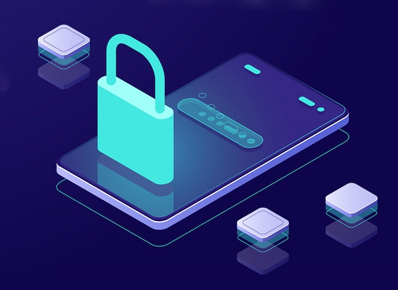As mobile apps grow in popularity, so do security concerns. An increase in organizational mobility typically leads to an increase in the number of mobile devices accessing your systems remotely. Mobile app security flaws can cause major data loss, private information risk, and more! This means an increasing number of endpoints and several risks for your company’s security and data breach prevention. So now you can have an idea of how much importance mobile app security has in this industry.
Below are some of the top 10 vulnerabilities:
- Improper Platform Usage / Use Platform Properly:
Misuse of a platform feature or failure to use platform security controls can lead to vulnerabilities.
Example: Providing excessive platform permissions and misusing security controls such as iOS Keychain, the Android keystore System, Windows Hello, Encryption APi’s and so forth.
- Improper Data Storage / Store Data Securely:
Storing data improperly may expose it or cause unintended data leakage. This covers a wide range of possible problems areas, such as file and object storage on local drives, SD card, network volumes, and cloud storage, as well as memory caches, databases, log files, web cookies, and browser local storage. Vulnerabilities may originate from a variety of sources, such as the operating system, frameworks, the compiler environment.
- Insecure Communication:
This Includes:
- All aspects of packaging sensitive data and transmitting it into or out of the device.
- Using services improperly, exposing data, and transmitting sensitive assets without encryption.
- Communications between applications, between devices, between an application and server.
- Technologies such as TCP/IP, Wi-Fi, Bluetooth, NFC, audio, infrared, GSM, 3G, SMS, and RFID.
- Transport layer security problems, such as poor handshaking, using vulnerable SSL versions, failing to check certificates.
- Data such as password, tokens, encryption keys, private user information, account details, documents, metadata, and code.
- Risks to data in transit, such as unauthorized viewing or modification, and the inability to prove the data’s origin.
- Insecure Authentication:
Missing, inappropriate, or flawed authentication of the end user, or weak session management can give an attacker elevated rights or access to sensitive data.
Examples include granting anonymous access to a resource or service when authenticated and authorized access is required, and failing to maintain the user’s identity when it is required.
- Insufficient Cryptography:
This includes:
- Never store the user’s password or share it with the client.
- Enforce strong password policies.
- Make sure authentication requirements of your various platforms match. For example, authentication requirements of your mobile and desktop applications should match those of the equivalent web application.
- Whenever possible, perform authentication requests on the server side. Load applications data on the client only upon successful authentications.
- Avoid storing sensitive client data. If you must do this, ensure that the data is only accessible after the correct credentials have been successfully entered using an encryption key that is securely derived from the user’s credentials.
- Persistent authentications (“remember on this device”) is not a safe default for mobile applications. Provide it as an opt-in-settings.
- For mobile device applications, enable the user to revoke persistent authentications from a remote management console so the user can revoke access by stolen or lost device.
- Incorrect or inappropriate use of cryptography can leave sensitive data exposed.
- Insecure Authorization:
Failure to authorize properly may enable an attacker to gain elevated privileges. An example of insecure authorization include having client-side code that determines permissions based on authentications, where it facilitates a client-side attack.
- Client Code Quality:
A variety of client code quality problems on the client side(desktop and mobile apps, web client,etc.) may lead to a range of security problems.
Examples of client code quality problems include buffer overflows and format string vulnerabilities.
- Code Tampering:
Exposure of code and data may enable an attacker to:
- Identity vulnerabilities, information about back-end servers, cryptographic constants and ciphers, and application’s functionality.
- directly modify an application’s functionality.
- Change the contents of memory.
- Change or replace system API’s.
- Modify data and resources in order to subvert the intended use of the software.
- Reverse Engineering:
Mobile apps are especially vulnerable to reverse engineering and code tampering. To reverse engineer, the attacker processes exposed files (such as an app package on a mobile device) to extract its source code, libraries, algorithms, and other assets.
- Extraneous Functionality:
Developers might include extra hidden functionality in the released version of an app, which provides a back door that gives an attacker inappropriate access.
Examples include noting a password within an included app resource, or disabling two-factor authentication during testing and leaving it disabled in the release version.

